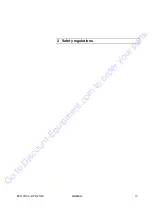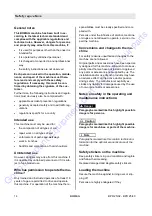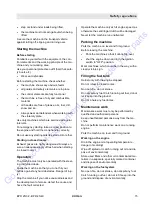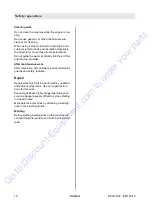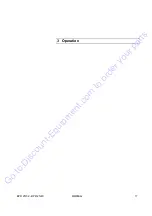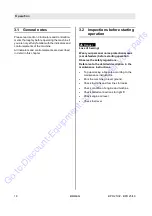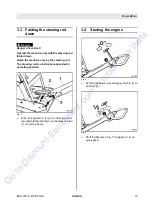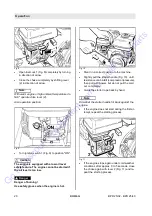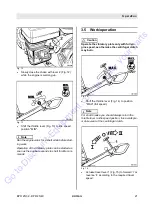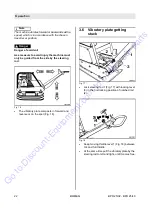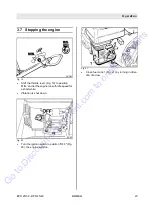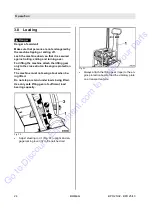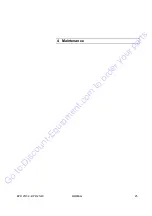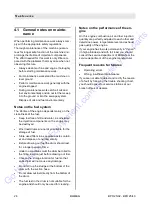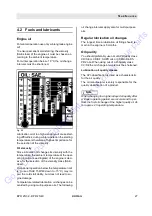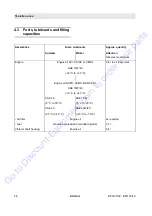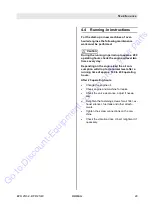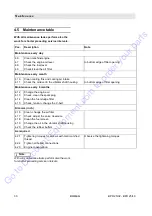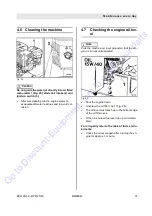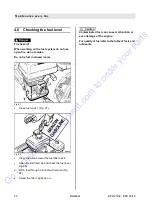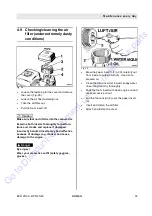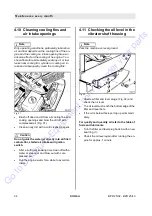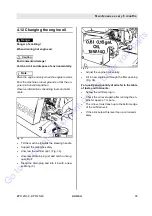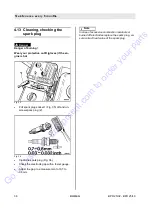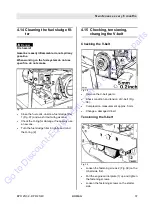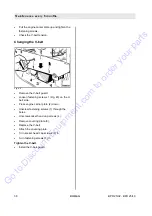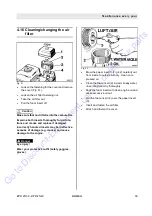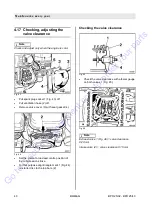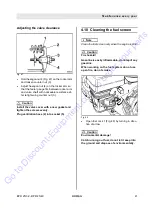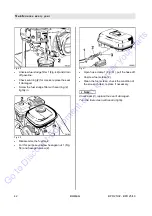
0DLQWHQDQFH
%20$*
27
BPR 25/32 - BPR 25/40
4.2
Fuels and lubricants
Engine oil
For winter operation use only winter-grade engine
oil!
To ensure excellent cold starting, the viscosity
(SAE-class) of the engine oil must be chosen ac-
cording to the ambient temperature.
For winter operation below -10 °C the oil change
intervals must be shortened.
Fig. 24
Lubrication oil of too high viscosity will cause start-
ing difficulties, during winter operation the starting
temperature is therefore of highest importance for
the selection of the viscosity.
Oil viscosity
Since lubrication oil changes its viscosity with the
temperature, the ambient temperature at the oper-
ating location (see diagram) of the engine is deci-
sive for the selection of the viscosity class (SAE-
class).
Occasional operation below the temperature limit
(e.g. use of SAE 15W/40 down to -15 °C) may im-
pair the cold start ability, but does not lead to en-
gine damage.
Temperature related lubrication oil changes ca be
avoided by using multi-purpose oils. The following
oil change intervals apply also for multi-purpose
oils.
Regular lubrication oil changes
The longest time a lubrication oil filling should re-
main in the engine is 6 months.
Oil quality
You should preferably use oils of API-quality class
CD/SE or CD/SF, SHPD oils or CCMC-D4-D5-
PD2 oils. When using oils of API-quality class
CC/SE the oil change intervals must be shortened.
Lubrication oil quality classes
The API-classification is used as a characteristic
for the oil quality.
The oil manufacturer is solely responsible for the
quality classification of a product.
L
Note
When changing to a higher alloyed oil quality after
a longer operating period, we recommend to per-
form the first oil change of the higher quality oil af-
ter approx. 25 operating temperature.
Go
to
Discount-Equipment.com
to
order
your
parts

